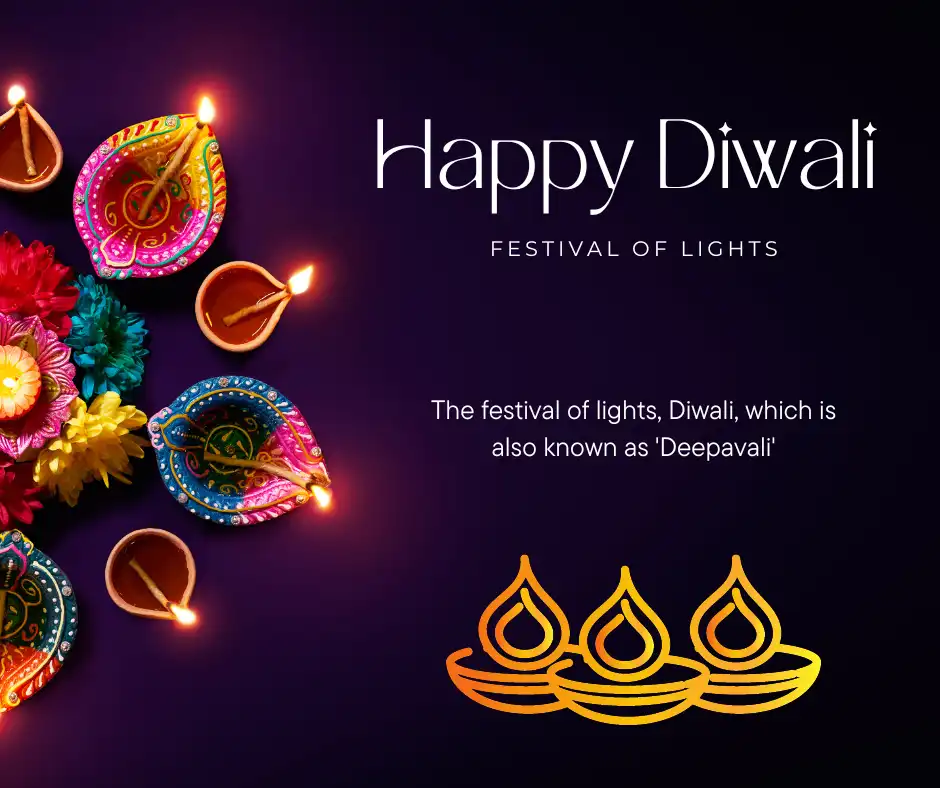Deepavali or Diwali is a festival of light, and it symbolizes “truth always wins”.
Diwali is among the biggest celebrations in India. Deepavali is celebrated from the 13th day of the month of “karthika” which is called trayodashi as per the lunar cycle.
In 2023, Diwali is being celebrated on Sunday, November 12, which is a new moon day or Amavasya.
Diwali is a Hindu festival. It’s celebrated in India and other countries around the world. this festival is also called the Festival of Lights in India. Diwali is one of the most important events in Hinduism.
Diwali marks the end of Durga Puja and begins a Happy New Year in India. It is also called “The Festival of Lights” as people light lamps, candles, lanterns, and fireworks to celebrate this occasion. It is also known as “The Festival of Love”.
Deepavali is a five-day festival that celebrates the victory of light over darkness, good over evil, knowledge over ignorance, and the Cultural Celebration of Light and Prosperity.
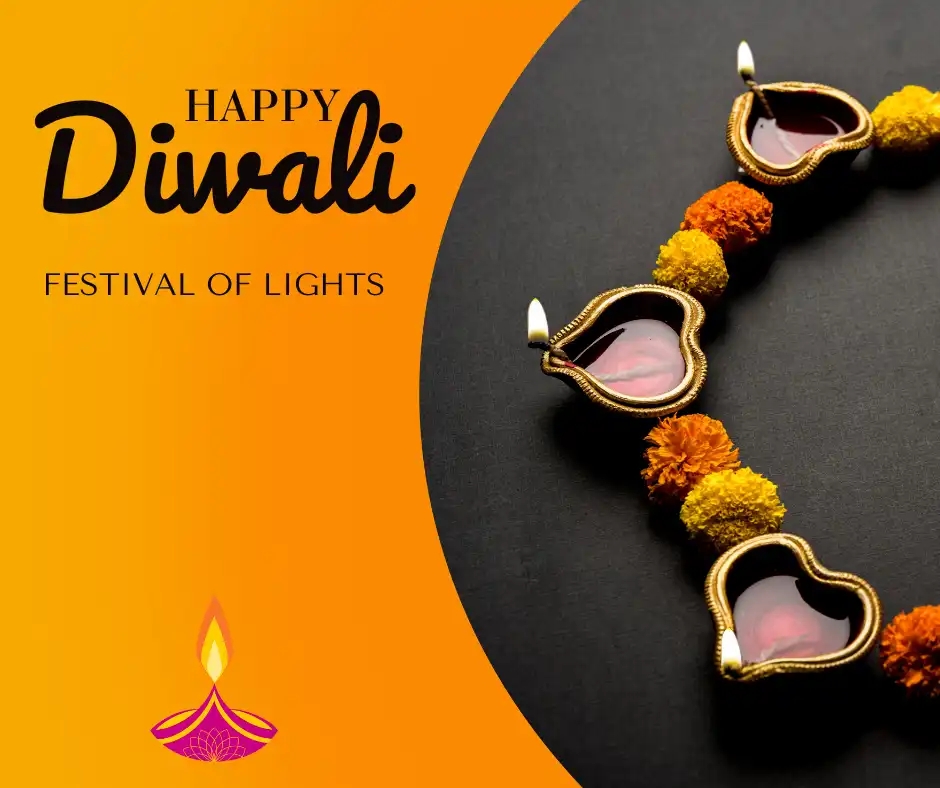
Happy Diwali 2023
The celebration of lights is called Diwali. It is observed in India, Nepal, Sri Lanka, and other countries with large Indian populations. It is a traditional Hindu holiday that honors the victory of good over evil.
The event usually takes place on the shortest day of the year in mid-October to early November. Diwali and Tihar are other names.
| Festival Date | Day | Thithi | Muhurat Timings | Celebrations |
| 10 November, 2023 | Friday | Trayodashi | 06:02 PM – 08:00 PM | Dhanteras |
| 11 November, 2023 | Saturday | Chaturdashi | 11:39 PM – 12:32 AM | Choti Diwali |
| 12 November, 2023 | Sunday | Amavasya | 05:40 PM – 07:36 PM | LAKSHMI PUJAN / Kali Puja / Diwali |
| 13 November, 2023 | Monday | Pratipada | 06:18 AM – 08:36 AM | Govardhan Puja |
| 14 November, 2023 | Tuesday | Dwitiya | 01:17 PM – 03:30 PM | Bhai Dooj |
Happy Diwali Wishes
Here in this post, we share some Happy Diwali wishes that will make this festive season even more special!
On this Diwali, may your dreams and aspirations come true. Happy Deepavali!
May the divine light of Diwali spread peace, happiness, and prosperity in your life. Happy Diwali 2023!
On this auspicious occasion, I wish you a Diwali filled with success, happiness, and endless moments of joy. Happy Diwali!
May the blessings of Goddess Lakshmi bring wealth and abundance into your life. Happy Deepavali!
May the festival of lights fill your heart with love and your home with happiness. Happy Deepavali!
May the joy and togetherness of Diwali fill your heart and home. Happy Diwali!
As you celebrate Diwali with family and friends, may your heart be filled with love and your life with light. Happy Diwali!
As you light the diyas and enjoy the sweets, may your life be filled with sweetness and light. Happy Diwali!
On this Diwali, may your life be as colorful and bright as the fireworks in the sky.
May the divine light of Diwali shine on you and guide you towards success and happiness. Happy Diwali!
May the festival of lights bring new opportunities and success into your life. Happy Diwali 2023!
Diwali is the time to celebrate the victory of light over darkness. May your life always be filled with positivity and brightness. Happy Deepavali!
Wishing you a sparkling and joyous Diwali! May this festival of lights illuminate your life with happiness and prosperity.
Wishing you a Diwali filled with sweet moments and cherished memories. Happy Deepavali!
May the diyas of Diwali illuminate the path of success for you and your family.
Wishing you a Diwali that’s as beautiful and bright as the fireworks in the night sky. Happy Diwali!
Wishing you a Diwali filled with laughter, love, and lots of sweets.
May the glow of Diwali lights bring warmth and love to your home. Happy Deepavali 2023!
Wishing you a year filled with happiness, prosperity, and good health. Happy Diwali!
Diwali is the time to celebrate with loved ones and create beautiful memories.
Best Happy Diwali Status and SMS
- It is a good idea to have a year as stunning as those fireworks that light up Diwali.
- Enjoy a joyful and prosperous Diwali with the ones you love dearly I wish you all the best!
- I truly hope that this Deepavali will usher in a year of incredible victory for you.
- To celebrate Diwali this year, may your home be filled with warmth, light, and peace.
- Thank you for your support! Happy Deepavali to you!
- I hope this Deepavali will be a year of prosperity for you.
- Thank you for wishing you a wonderful Diwali as happy and vibrant as the festival.
- I wish you the most wonderful Deepavali!
- All the best and all the best to your loved ones this Deepavali.
- I would like to wish you peace and happiness next year, and a joyful Diwali celebration.
- The bright light of Diwali can help you bring an end to your anxiety.
- Have a fantastic Diwali celebration! I ask for a truly blessed Deepavali.
- We wish you and your beloved family members the most joyful Deepavali holiday.
Happy Diwali Images
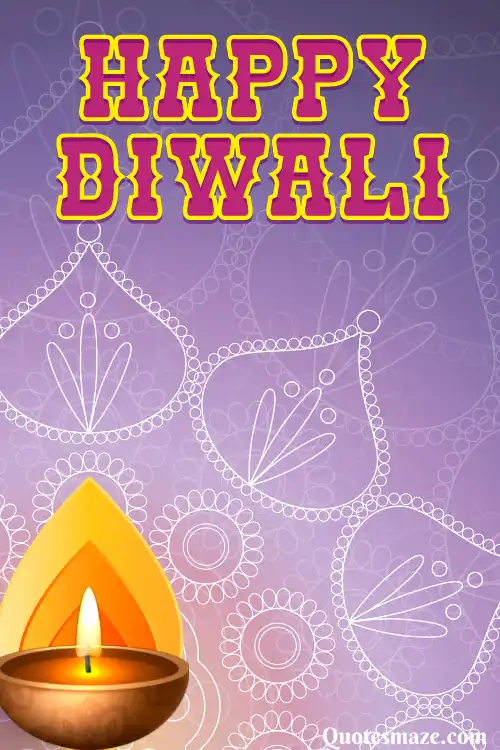
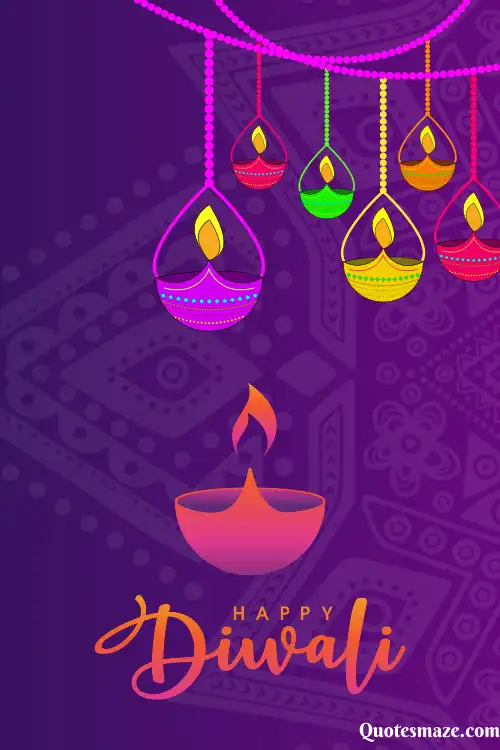


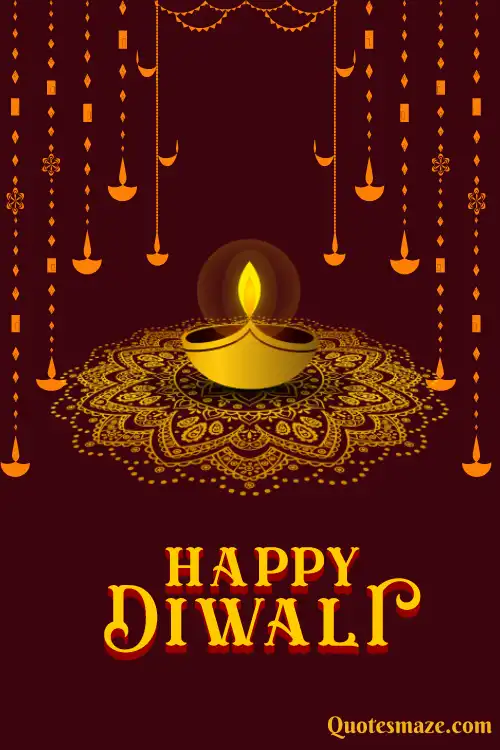
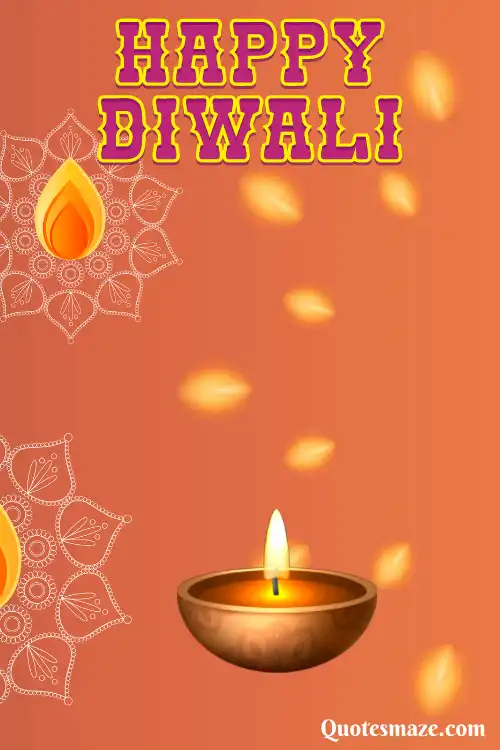
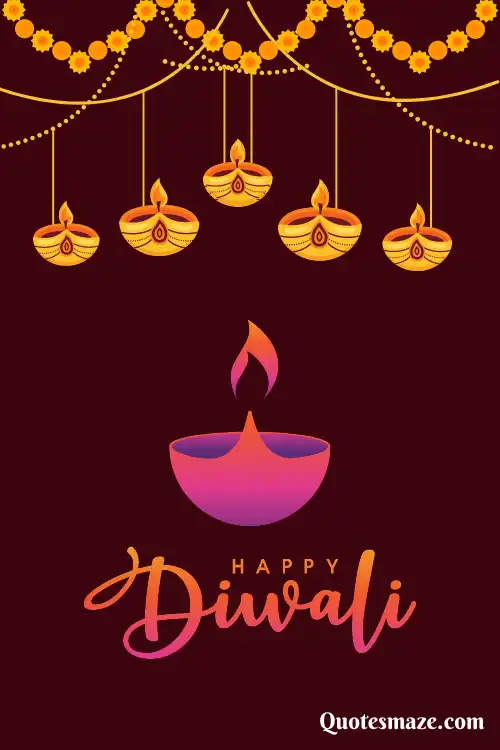

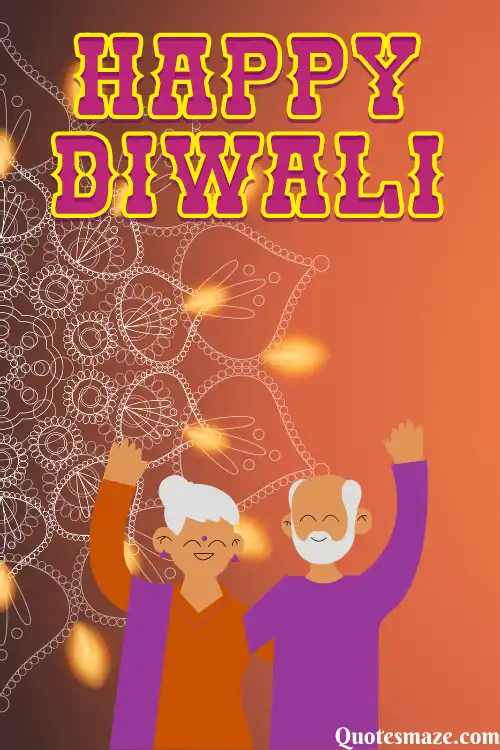
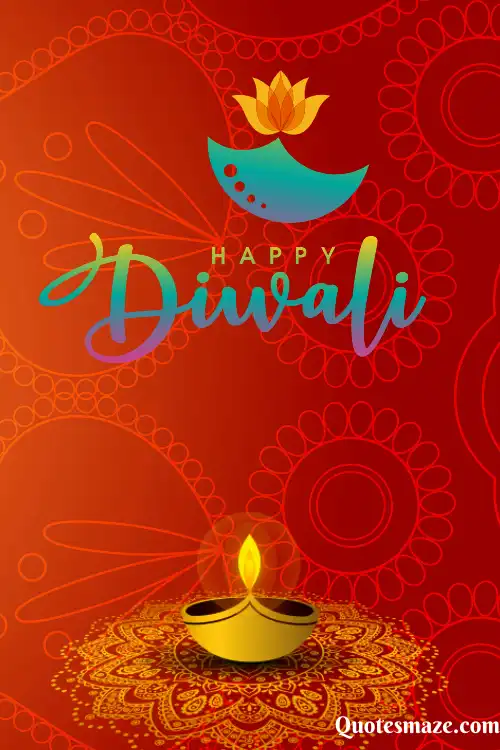
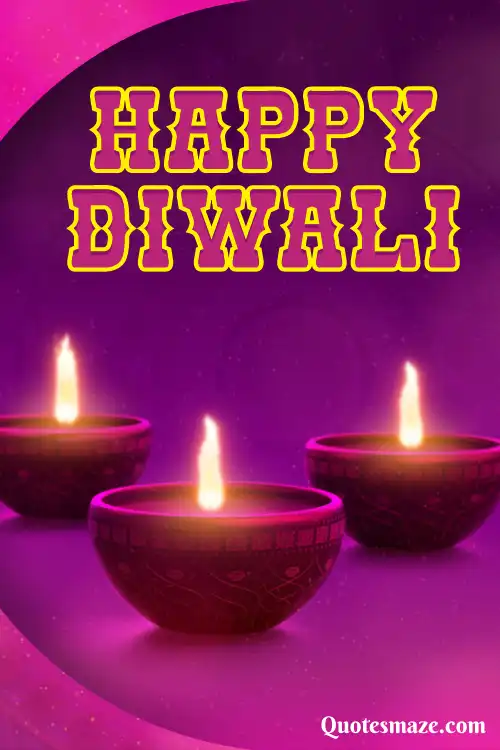
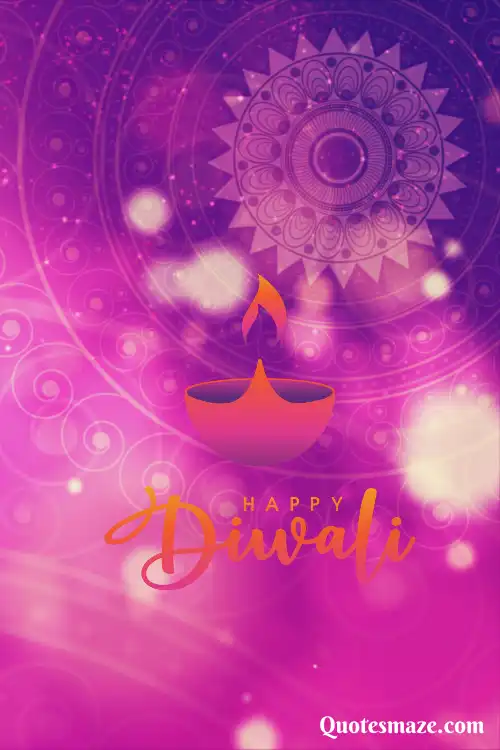
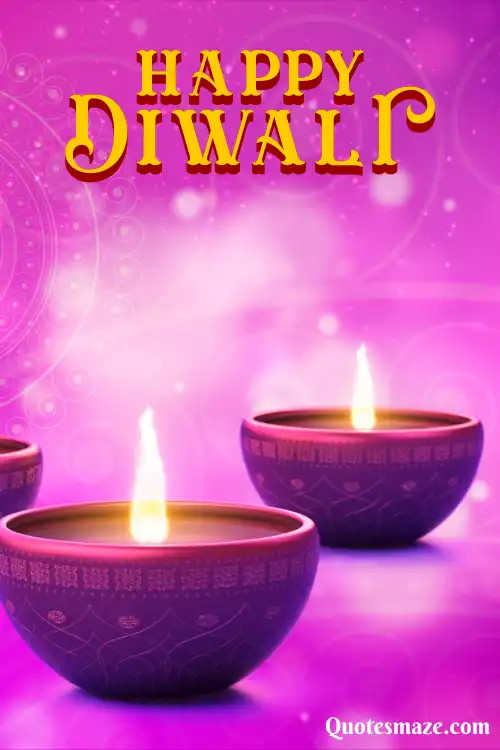
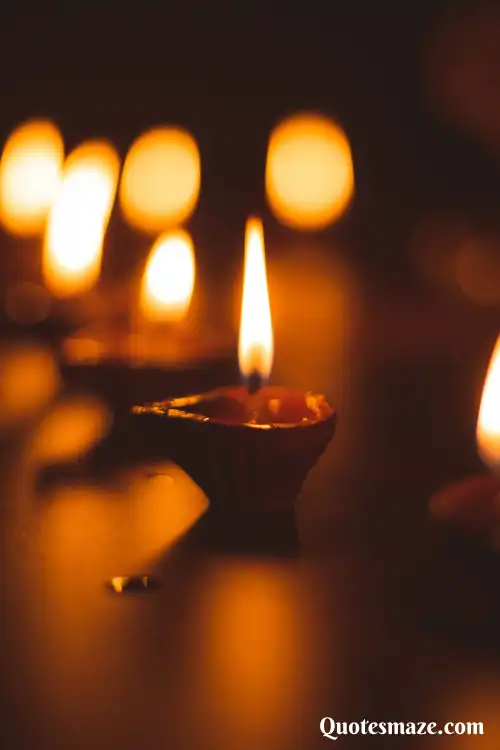
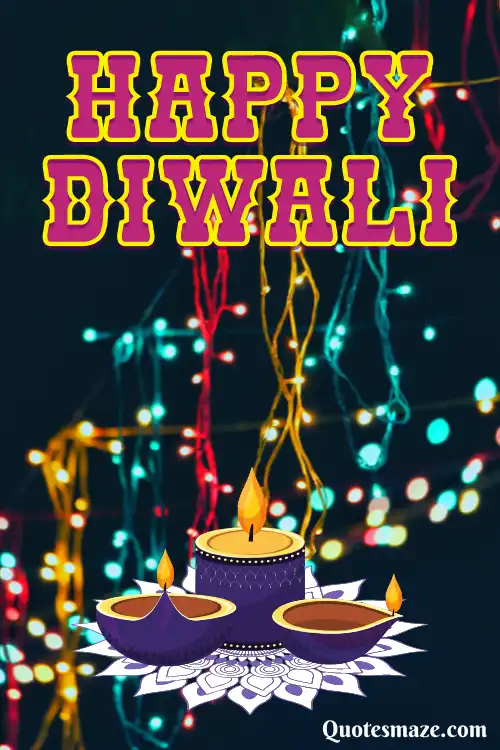
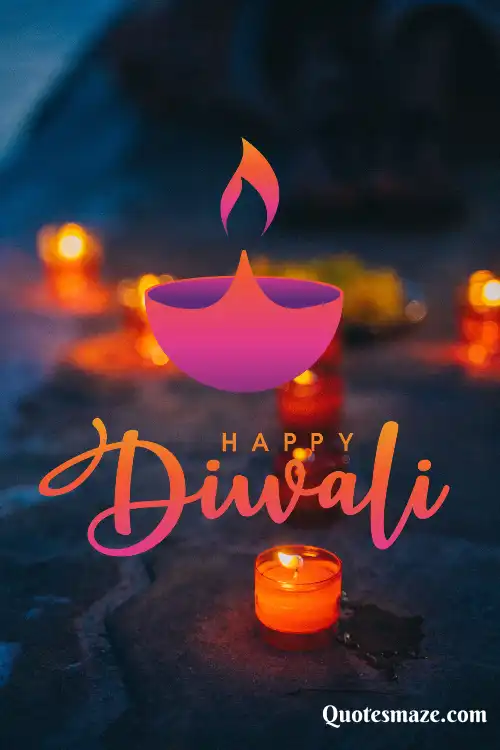
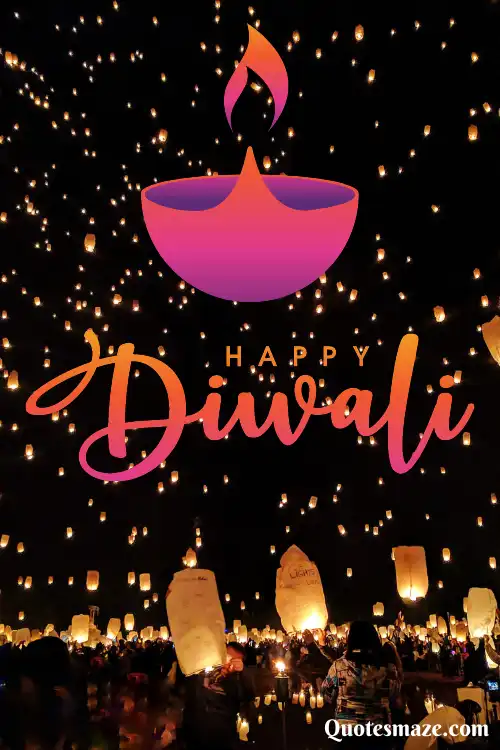
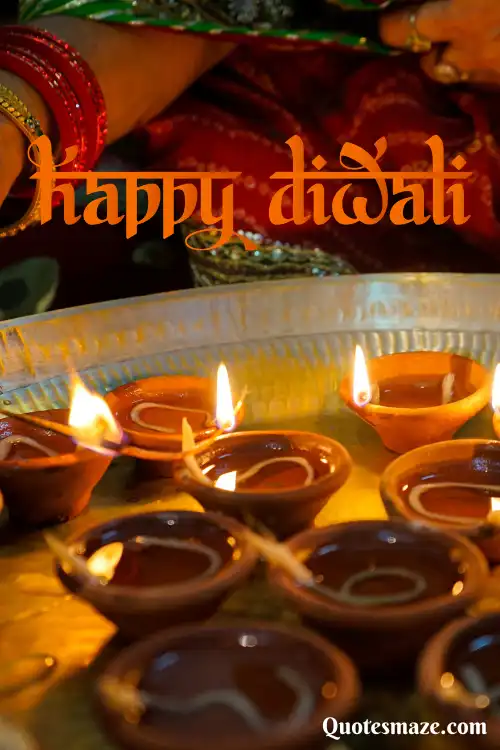
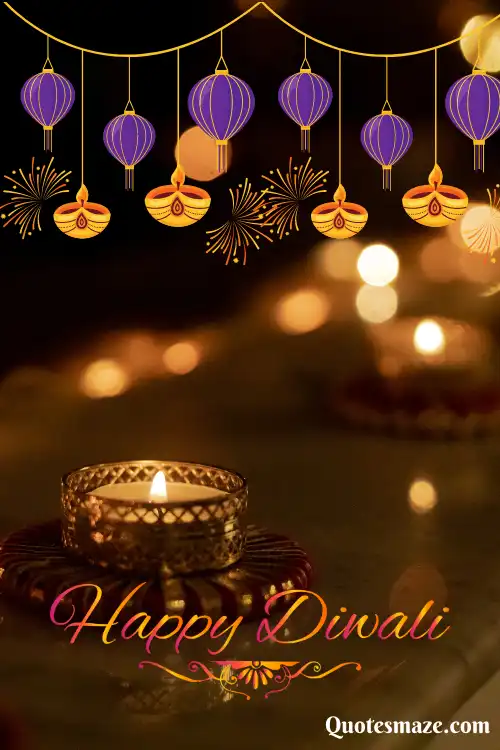
WHY DIWALI IS CELEBRATED IN INDIA:
Deepavali or Diwali or Divali is a celebration of the spiritual victory of Light Over Darkness. This ceremony represents the victory of good over evil, wisdom over ignorance, virtue over vice, and hopes over despondence.”
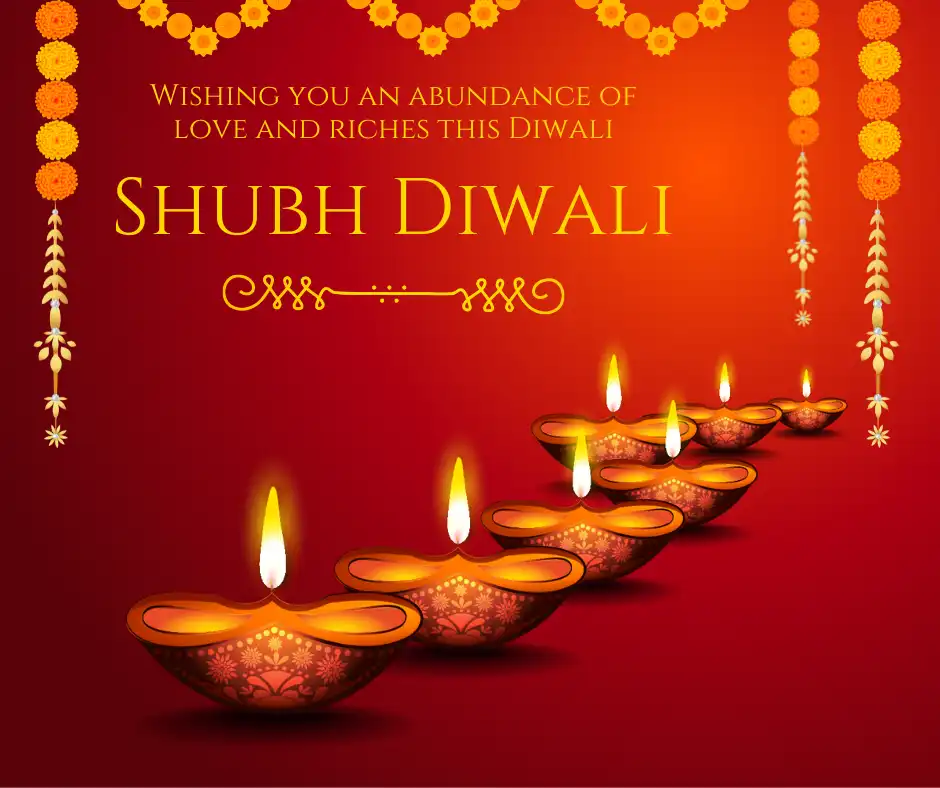
HOW DIWALI IS CELEBRATED IN INDIA:
Usually, 5 days are celebrated in this festival, but the importance of the earlier days of the festival are more important.
The starting days of the festival start with a thorough cleaning of every house and shop. People make rangolis and use lights to decorate their homes. People visit each other’s houses to exchange new dresses and sweets. Mothers are busy making “ Narkel Naru ” and various types of sweets usually made up of natural ingredients.
As with all Indian festivals, Diwali also has a spiritual significance and everybody celebrates by lighting lamps and bursting crackers.
In a true testament to unity in diversity, One thing that remains common is that every village, town, and city is lit up with thousands of lamps everywhere. This lighting of lamps symbolizes the victory of light over darkness.
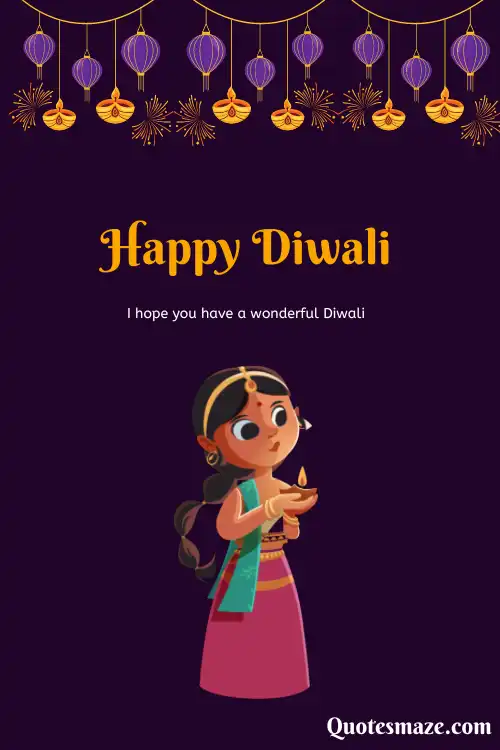
DHANTERAS ( DHANVANTARI TRAYODASHI):
The first day of the festival is called DHANTERAS.
The 13th day of the month “Kartika” Or Trayodashi of Kartika month Is celebrated as Dhanteras. Traditionally the science behind this is on this day everybody worships Dhanvantari, the deity dedicated to one’s health and well-being.
People buy gold and Other utensils on this day in the belief and hope of Good Fortune.
NARAKA CHATURDASHI :
On the second day of Diwali
“Naraka” means hell and “Chaturdashi” means “fourteenth”. According to some ancient Texts, on this day Lord Krishna slew the demon named “Narakasura”.
The day and its rituals are interpreted as ways to liberate any souls from their suffering in “Naraka”, or hell, as well as a reminder of spiritual auspiciousness.
Naraka Chaturdashi, also called Chhoti Diwali, is the second day of celebrations that coincides with the 14th day, of the 2nd fortnight of the lunar month.
LAKSHMI PUJAN OR KALI PUJA :
LAKSHMI PUJAN is marked on the third day of Deepavali.
On the last day of the dark fortnight of the lunar month, we celebrate Diwali Or Deepavali by worshipping Maa Kali and Maa Lakshmi. This is the third day of Diwali or Deepawali and is considered the main festive day. All the members of the family will sit together for the puja and pray to Maa Laxmi for their wellbeing. In West Bengal, people will worship Maa Kali having Fasted until all the rituals and pujas are done by purohit. Mothers Draw “Alpana” and lit diyas and mombattis in their courtyard.
GOVARDHAN PUJA:
In some rural communities of west, north and central regions, the fourth day of the festival is celebrated as Govardhan Puja. The celebration is based on the mythological story of the Hindu god Shri Krishna.
To help the cowherds and farmers from the incessant rains and resulting floods caused by the anger of Lord Indra, Lord Shri Krishna lifted the entire Govardhan hill on his left little finger and arranged a shelter.
Read Also: 74th Republic Day | Happy Republic Day 2023.
BHAI DOOJ:
The last day of the festival is called Bhai Duj, Bhau Beej, Bhai Tilak or Bhai Phonta.
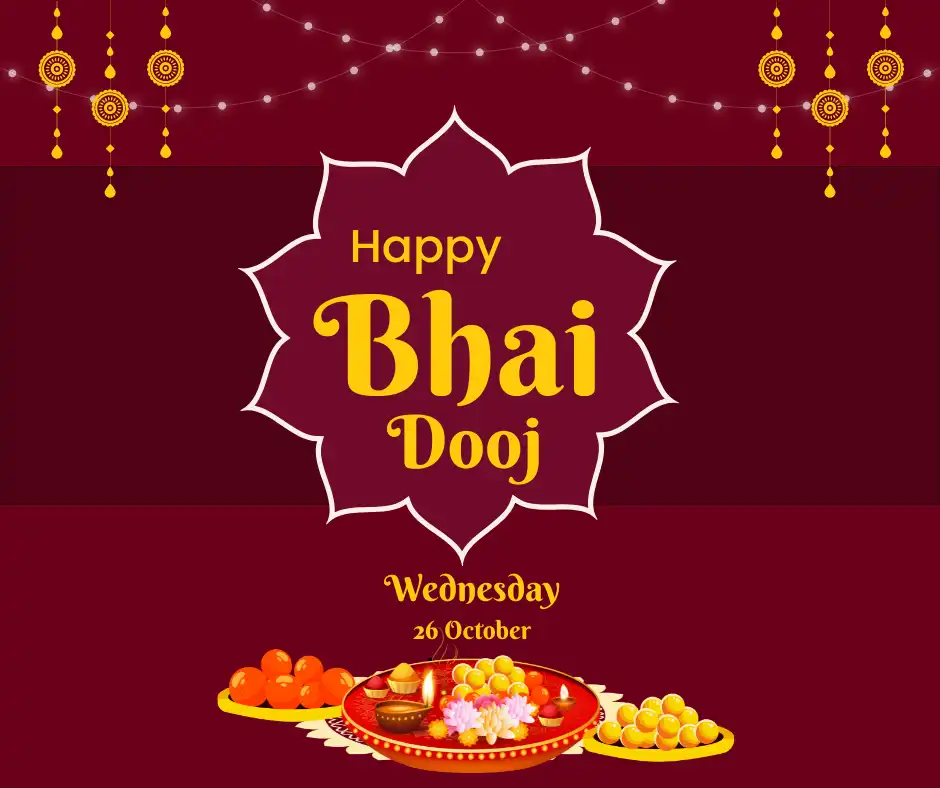
Bhai Duj or Bhai Phonta is a ceremony to celebrate the bond between a sister and her brother. Every sister performs this ritual by putting a Tilaka on the forehead of her brother and praying for his health and prosperity and the long life of her brother. Brothers are then served their beloved food and sweets.
Let us celebrate the “festival of lights” by spreading happiness and love across the world. We wish you a happy, safe, and pollution-free Diwali. We are grateful that you read this article.
